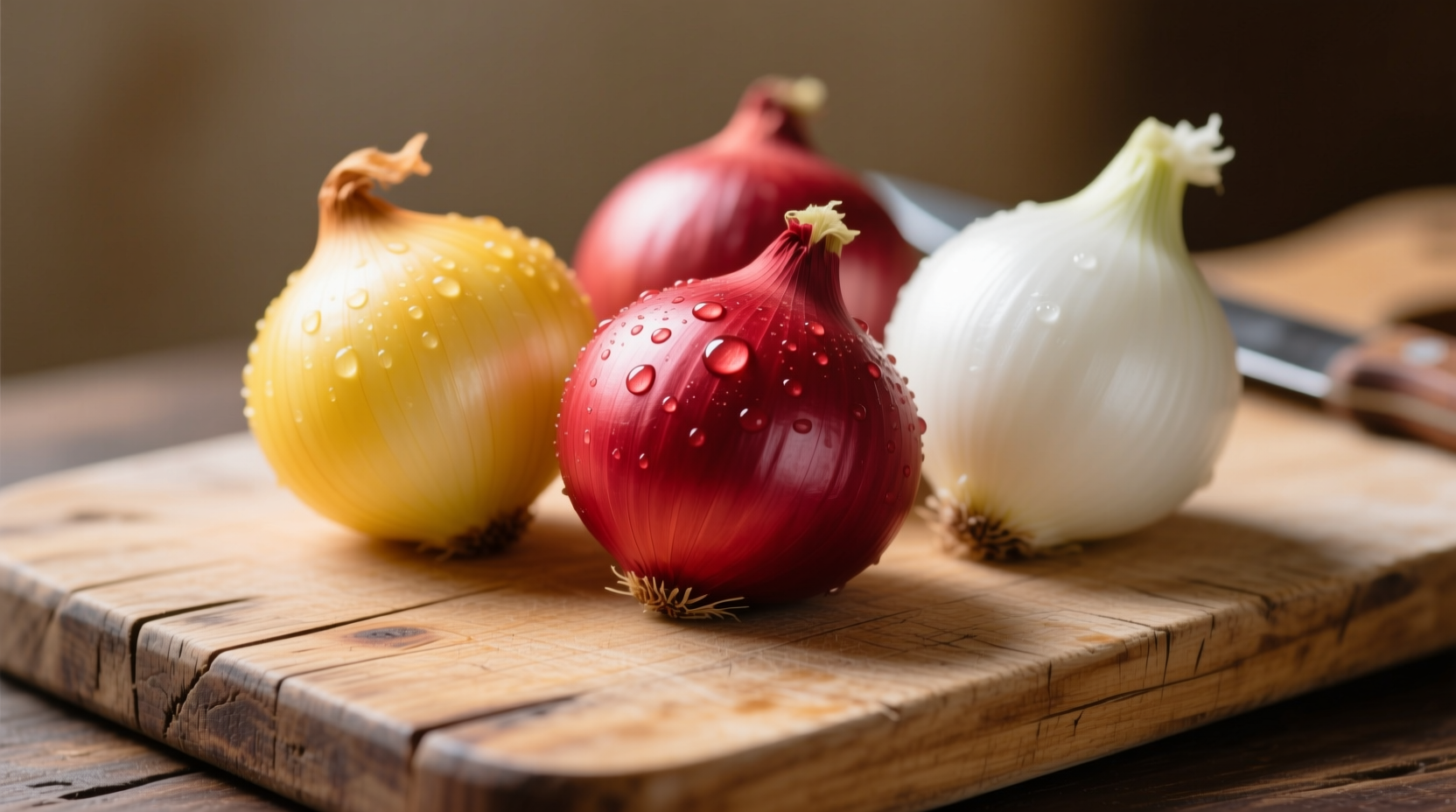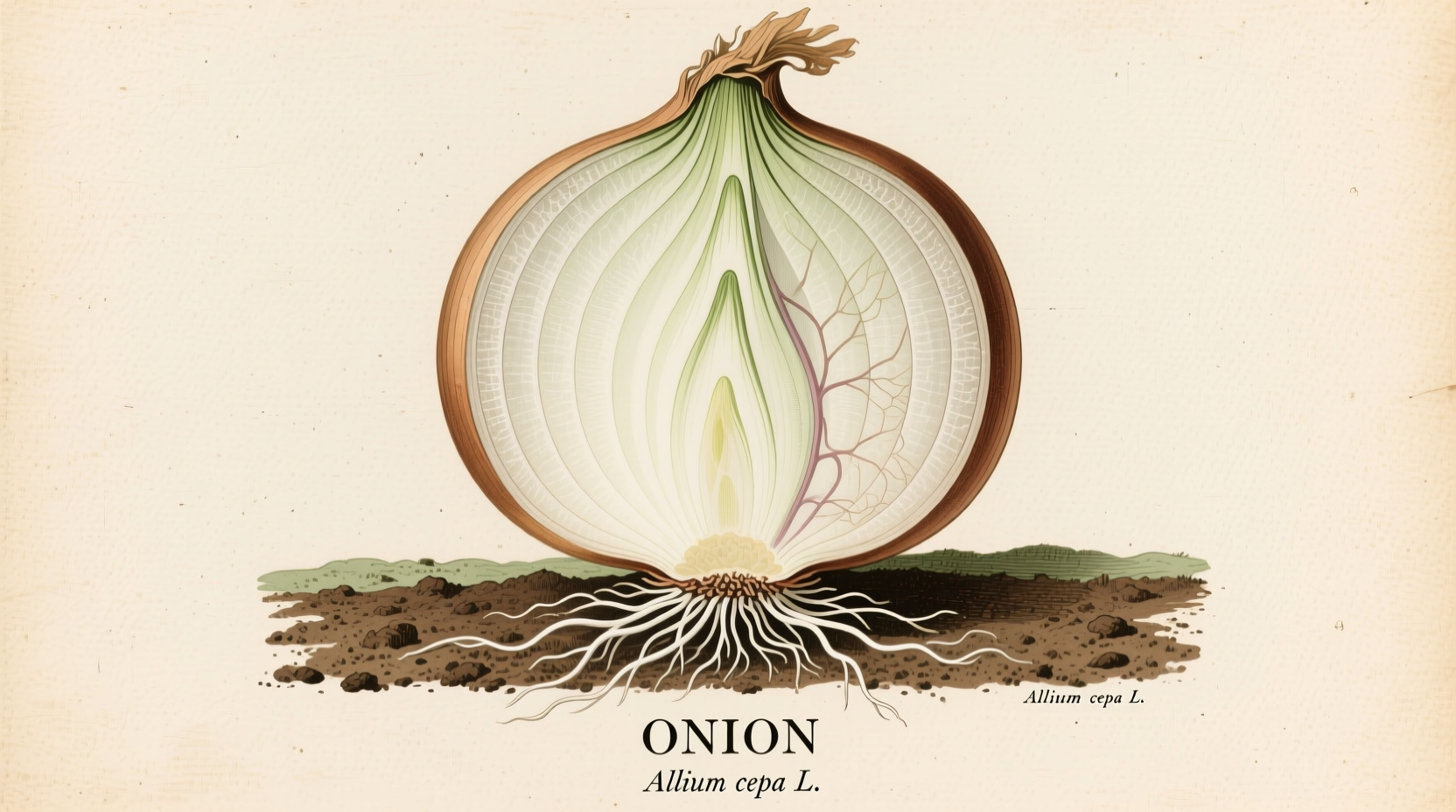When you slice into an onion and feel those familiar stingy tears, you're experiencing one of nature's most fascinating chemical reactions. But beyond that immediate sensory experience lies a complex botanical marvel with thousands of years of human history. Understanding the onion definition goes far beyond just recognizing it as a kitchen staple—it reveals insights about plant adaptation, culinary evolution, and nutritional science that benefit home cooks, gardeners, and food historians alike.
Botanical Classification and Structure
The scientific onion definition identifies it as Allium cepa, part of the Allium genus that includes garlic, leeks, and chives. This bulb-forming plant develops its characteristic layers from modified leaf bases that store nutrients for the plant's survival during dormant periods. The outer papery skin, typically brown, red, or yellow, protects these concentric layers from moisture loss and physical damage.
What makes onions unique among vegetables is their specialized adaptation for survival. When conditions become unfavorable, the plant channels energy into bulb formation rather than flowering. This evolutionary strategy has made onions remarkably resilient across diverse climates, contributing to their global cultivation.
Historical Timeline of Onion Cultivation
Onions represent one of humanity's earliest cultivated crops, with evidence tracing their domestication to approximately 5000 BCE. This historical journey reveals how this humble vegetable shaped civilizations:
| Time Period | Historical Significance | Documentation Source |
|---|---|---|
| 5000 BCE | Earliest evidence of onion cultivation in Bronze Age settlements across Iran and West Pakistan | National Center for Biotechnology Information (NCBI) research on Allium domestication |
| 2600 BCE | Onions featured in ancient Egyptian burial sites, including King Ramses IV's tomb | Egyptian archaeological records from Thebes |
| 5th Century BCE | Greek historian Herodotus documents onions as payment for pyramid workers | Herodotus' Histories, Book II |
| 1st Century CE | Roman agricultural writer Columella details onion cultivation techniques in De Re Rustica | Ancient Roman agricultural manuscripts |
| 16th Century | Spanish explorers introduce onions to North America | Colonial records from Spanish missions |
Common Onion Varieties Compared
While the basic onion definition applies to all varieties, significant differences exist in flavor profiles, storage capabilities, and culinary applications. Understanding these distinctions helps home cooks select the right onion for specific recipes:
| Variety | Flavor Profile | Best Culinary Uses | Storage Duration |
|---|---|---|---|
| Yellow Onions | Strong, pungent when raw; sweetens significantly when cooked | Caramelizing, soups, stews, roasting | 3-4 months in cool, dry conditions |
| Red Onions | Sharper, more acidic with vibrant color | Salsas, salads, pickling, grilling | 2-3 weeks refrigerated |
| White Onions | Crisp, clean flavor with less sweetness | Mexican cuisine, fresh salsas, fish dishes | 2-3 weeks refrigerated |
| Shallots | Delicate, subtle garlic-like notes | Vinaigrettes, sauces, delicate dishes | 1-2 months in cool, dry conditions |
| Green Onions | Mild, fresh flavor throughout | Garnishes, stir-fries, salads | 5-7 days refrigerated |
Chemical Properties Behind Onion Characteristics
The distinctive properties of onions stem from their unique chemical composition. When onion cells are damaged through cutting or crushing, enzymes called alliinases convert sulfoxides into sulfenic acids. These unstable compounds then rearrange into syn-propanethial-S-oxide, the volatile gas responsible for eye irritation. This defense mechanism evolved to deter predators but has become a familiar kitchen experience worldwide.
Interestingly, chilling onions before cutting slows enzyme activity, reducing tear production. Similarly, cutting near running water or using sharp knives that cause less cellular damage can minimize the release of these compounds.
Nutritional Profile and Health Benefits
Onions provide significant nutritional value beyond their flavor contributions. A medium-sized onion (110g) contains:
- 44 calories
- 10g carbohydrates
- 2g dietary fiber
- 1g protein
- Rich in vitamin C, B vitamins, and potassium
- Contains flavonoids like quercetin with antioxidant properties
Research from the National Onion Association indicates regular onion consumption may support cardiovascular health through anti-inflammatory effects and potential blood pressure regulation. The sulfur compounds that cause tearing also contribute to these health benefits.

Practical Storage and Selection Tips
Proper storage significantly extends onion shelf life while maintaining flavor quality. Follow these evidence-based recommendations:
- Dry storage: Keep whole onions in a cool, dark, well-ventilated area (not the refrigerator)
- Avoid moisture: Never store onions near potatoes, which release moisture that accelerates spoilage
- Cut onions: Store in airtight containers in the refrigerator for up to 7 days
- Selecting quality onions: Choose firm bulbs with dry, papery skins and no soft spots
Understanding these practical aspects completes the comprehensive onion definition for everyday application. Whether you're selecting onions at the market, storing them properly, or utilizing their unique chemical properties in cooking, this knowledge transforms how you interact with this fundamental ingredient.
Frequently Asked Questions
What is the scientific name for common onions?
The scientific name for common onions is Allium cepa. This classification places onions in the Amaryllidaceae family, which includes other allium vegetables like garlic, leeks, and chives. The genus Allium contains over 850 species of bulb-forming plants.
Why do onions make you cry when you cut them?
Onions produce a volatile compound called syn-propanethial-S-oxide when their cells are damaged during cutting. This gas reacts with moisture in your eyes to form sulfuric acid, triggering tear production as a protective response. The enzyme alliinase converts sulfoxides into sulfenic acids, which then rearrange into this irritating compound.
What's the difference between onions and shallots?
While both belong to the Allium genus, shallots (Allium cepa var. aggregatum) have a more delicate, complex flavor with subtle garlic notes compared to regular onions. Shallots grow in clusters rather than single bulbs, contain less water, and have higher sugar content, making them preferable for vinaigrettes and sauces where a milder onion flavor is desired.
How long do different onion varieties last in storage?
Storage duration varies by variety: yellow onions last 3-4 months in cool, dry conditions; red onions last 2-3 weeks refrigerated; white onions last 2-3 weeks refrigerated; shallots last 1-2 months in cool, dry conditions; and green onions last 5-7 days refrigerated. Proper storage requires cool temperatures (45-55°F), low humidity, and good ventilation.
Are onions considered root vegetables?
No, onions are not root vegetables but rather bulb vegetables. While they grow underground, the edible portion consists of modified leaf bases (scales) that form concentric layers around a short stem. True root vegetables like carrots and potatoes develop from plant roots, whereas onion bulbs are specialized storage organs formed from leaf tissue.











 浙公网安备
33010002000092号
浙公网安备
33010002000092号 浙B2-20120091-4
浙B2-20120091-4